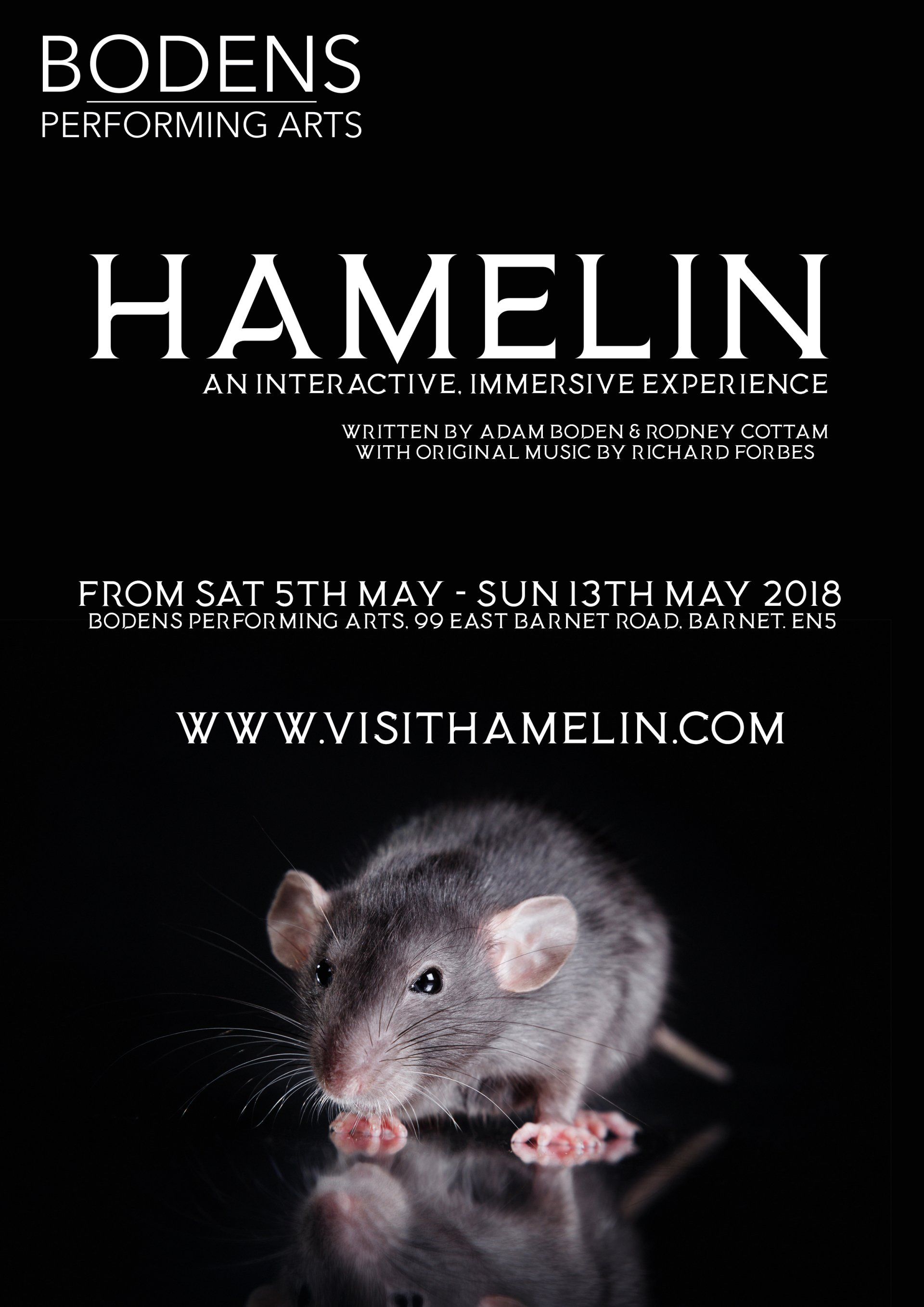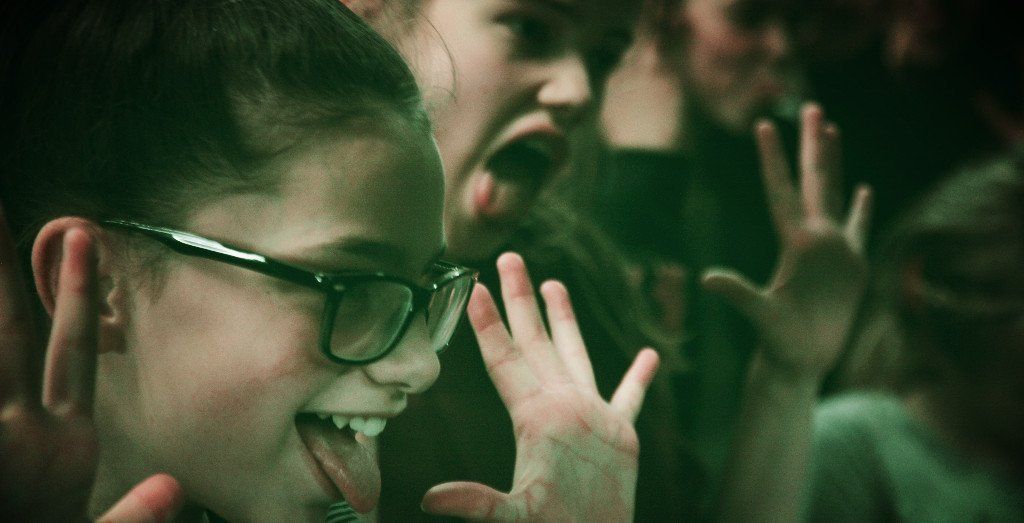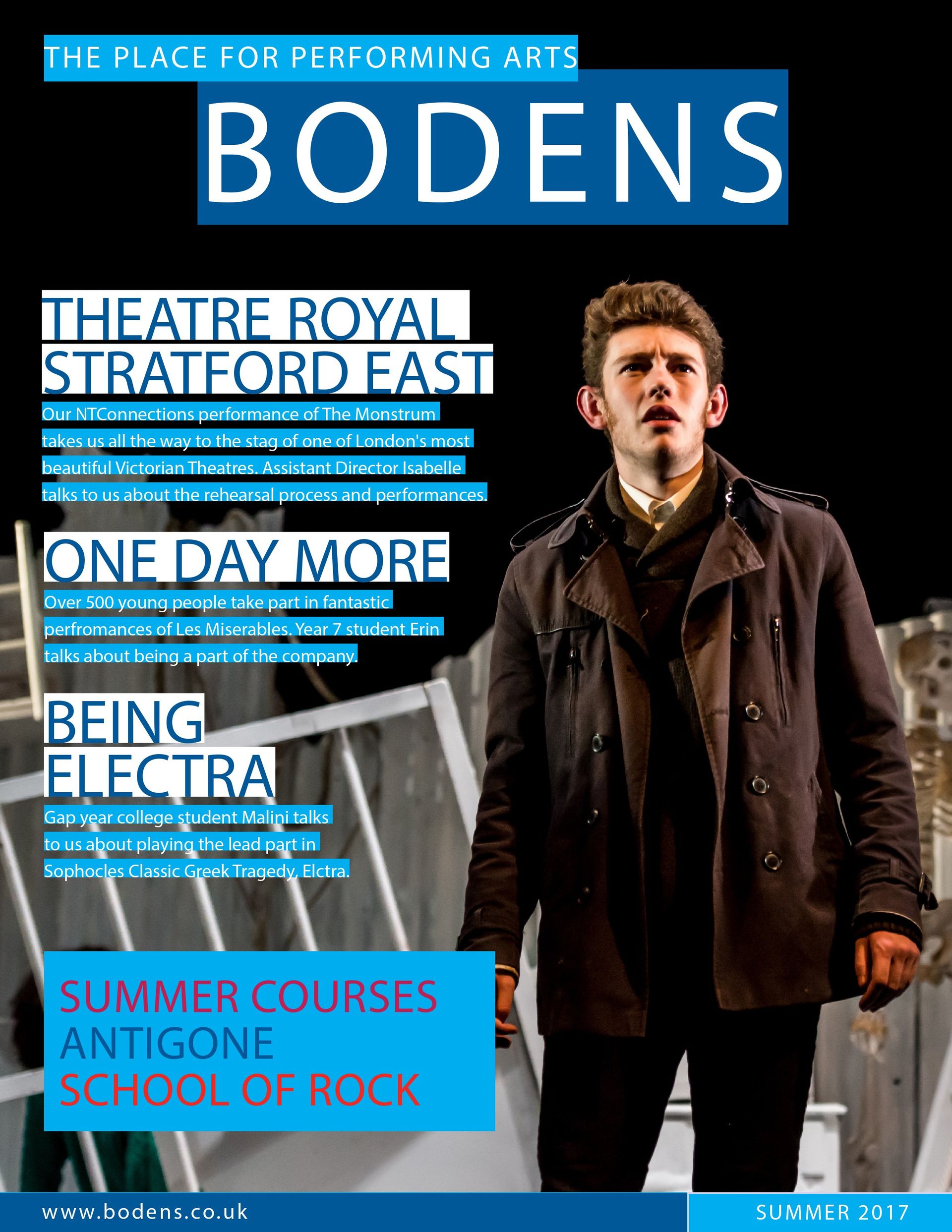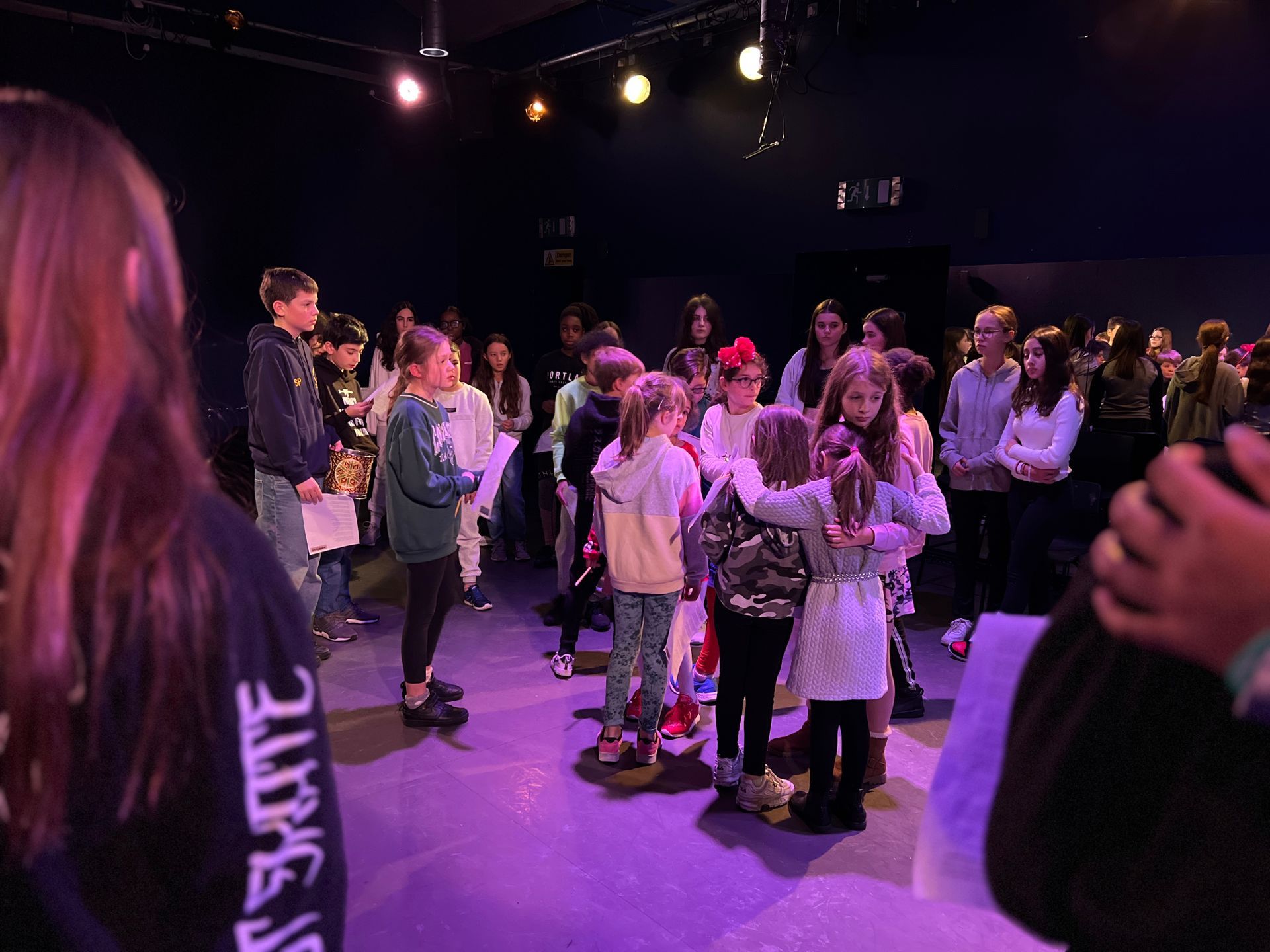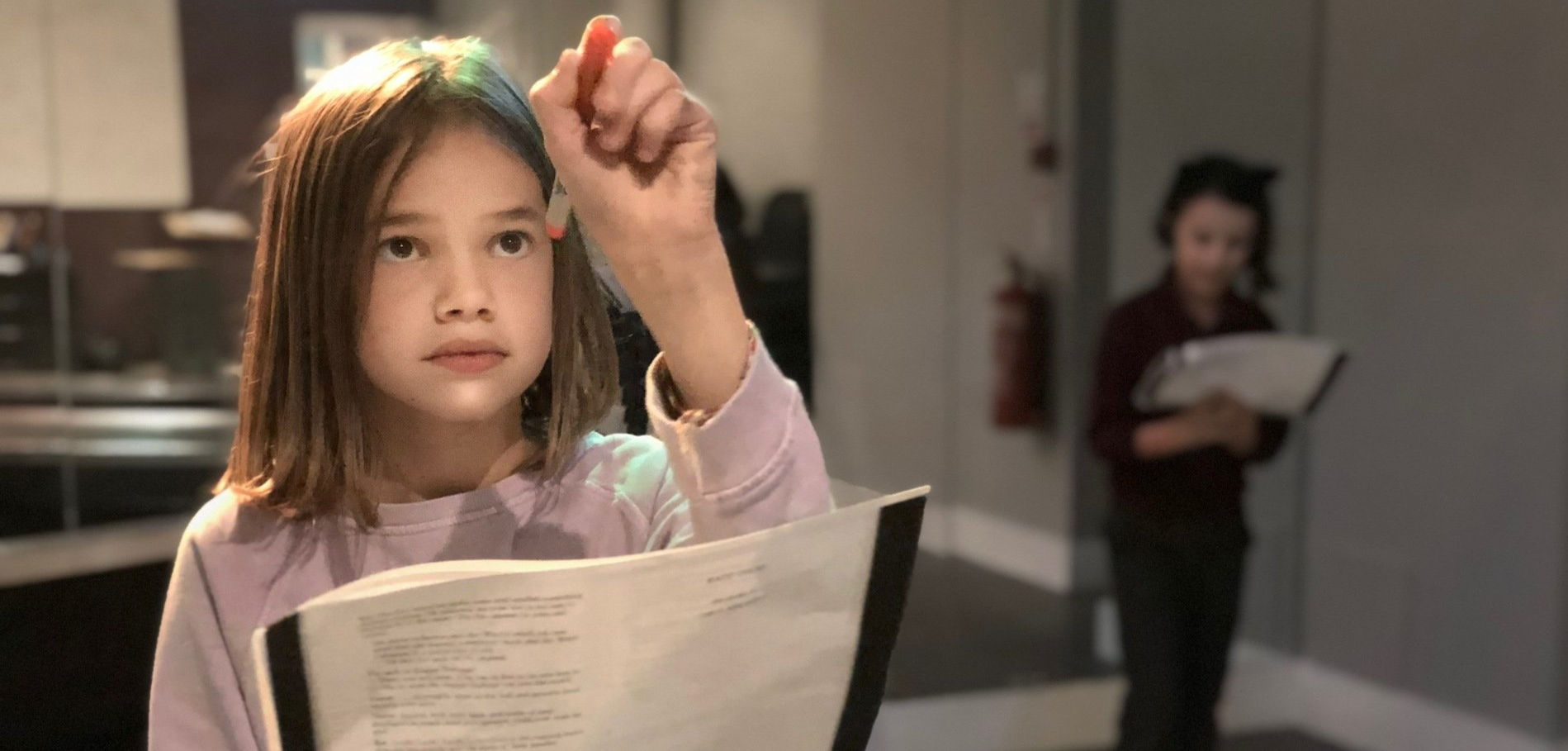Hamelin! Why Immersive, Promenade Theatre for young people at Bodens?
With the opportunity for our young people to experience immersive, promenade theatre, comes the possibility of providing them with additional moments of manageable risk. Through practical and theoretical research, we believe this increases their growth in confidence and ability as performers, and, in its own way, helps our young participants with the difficult transition into adulthood.

Some years ago, we attempted our very first large scale immersive,
promenade event as we took to the woods of Oakhill Park with thirty 7-12 year
olds, to tell Roald Dahl's versions of Little Red Riding Hood and The Three
Little Pigs. It was an extraordinary start to our summer, and the incredible
response and personal growth in our company members throughout the process led
us to question what exactly had been the special ingredient that had heightened
the impact of this event on our students.
As they led the audience from sticks to bricks, hiding in the bushes or forging
ahead to the next location, there was certainly an element of independence;
tutors kept a safe distance away to allow the performance to flow, and every
single company member was responsible for themselves throughout the show.
Being immersed within a different world brings with it a sense of the unexpected,
and while the constructed world itself is of course as safe as houses, within
the imagination there can be a sense of excitement, sadness, danger, happiness
and other emotions throughout.
It was later, through research carried out within the fields of youth and
immersive theatre, I was led to explore areas of neuroscience, and RISK caught
my attention.
Within the field of neuroscience, a multitude of research projects can be found
linking risk taking with the development of young people, and the actual need
for them to take risks. Risk taking is a positive thing for our children,
but as a risk prevention society we continually construct barriers that
prevent them from doing so safely. There is a possibility to provide them with
safe opportunities to take risks, particularly when you consider that as long
as they perceive the risk to be a risk, it has the same benefit to their
development. So, the trick is to provide them with safe and manageable risks
that they perceive to be not so. Within drama we often present our students
with risk. Getting up in front of your peers and reciting a script, joining an
improvisation, or showing your new costume can all feel risky, and it is up to
us as practitioners and facilitators to ensure these risks tend to lead to
successes and not failures (though failing is often part of the learning).
These immersive theatrical experiences can provide the participants with
heightened versions of the risk taking opportunities they normally undertake
within a dramatic process; being independent and responsible for a theatrical
production, having lines to deliver, props and staging to move, costume changes
to undertake, hitting the note, flowing the floss. But additionally, being
within an imagined constructed world can present participants with the
perception of all manner of risks within the dramatic experience.
Here, I am paraphrasing thousands of words of research into a more manageable
coffee accompanying blog, but hopefully you get the gist. At Bodens Performing
Arts we are creating really good theatre that the students enjoy, but we are
also ensuring all of the young participants have dialogue, opportunities and
responsibilities that help them overcome their fears, and improve their ability
and confidence through achievement and learning. Then we place all that within
an imagined, immersive world, add a promenade audience wandering from set to
set, take a few steps backwards, and let them fly. It's amazing. So why not
also make it a brand new musical and see what happens? www.visithamelin.com
